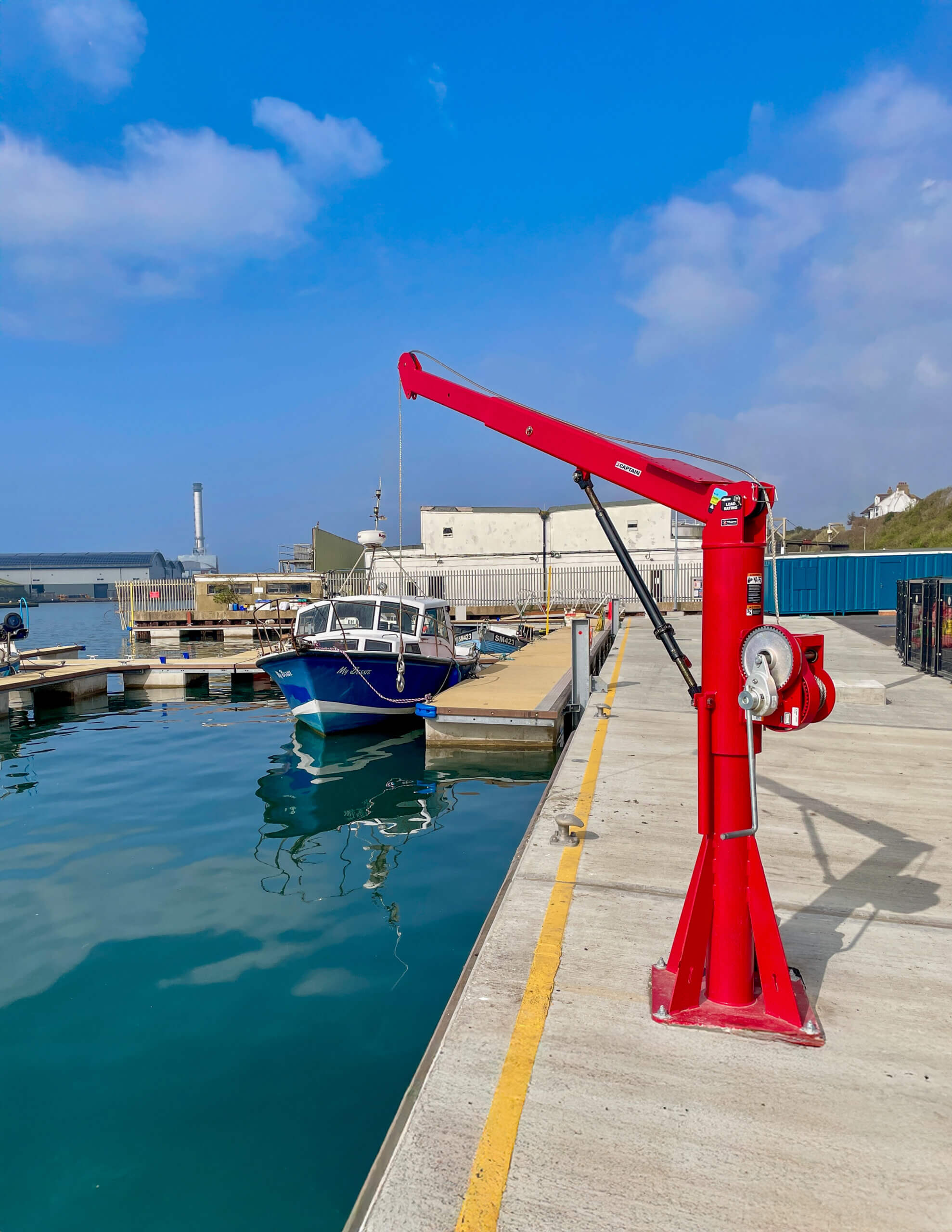The High Stakes of Lifting Beyond Limits
Davit cranes are used across a wide range of industries and almost countless applications, with both portable and stationary models playing key roles in ensuring hard work gets done. However, great versatility and widespread use means many davits are pushed beyond their safe load limits. While this doesn’t always end in disaster, using a davit to lift more than its capacity can be dangerous, violate industry regulations, and cause huge amounts of strain on your equipment.
Davit Crane Load Capacity Explained
The load capacity your davit is rated for indicates the maximum amount of weight it can safely lift. These capacities are determined by a number of factors, including:
- The material the crane is made from
- The strength of the various components of the davit (winch/hoist, accessories, base, lifting parts, etc.)
- Crane type
While all load capacities are specific to the individual davit, the type of crane will generally influence its load capacity. For instance, portable davits have a lower load capacity than stationary options, as they are made of lighter materials and don’t have the same high-strength base options (for more comparisons between the two types, check out our guide on portable vs. stationary davit cranes). If you are looking for the load capacity of your Thern crane, you can check the load rating sticker on the crane, your owner’s manual, or our crane product pages.
Engineering Risks of an Overloaded Davit Crane
When you overload your crane, it may not result in catastrophic failure right away. In fact, you might not notice a difference in performance at all — if you’re only paying attention to a single lift. However, overloading your crane can cause huge issues that can add up until there is a large-scale, dangerous failure. Repeated overloading causes stress fatigue throughout the structure of the crane and its components, which can lead to structural failure. It can also cause issues like:
- Hoist or winch motor malfunctions
- Cable or chain breakage
- Damage to the rotating mechanisms
- Frame warping
- Shortened longevity
- Decreased durability.
Overloading can also cause the weld seams to start coming apart, especially at the base mounts, which can lead to cranes falling over, cracked masts, and other massive problems.
Consequences for Safety and Compliance
As you might imagine, overloaded cranes are a significant safety and compliance issue on the worksite. Cranes that fall, snap, collapse, or otherwise suffer some kind of catastrophic failure can cause significant damage to surrounding equipment. More importantly, crane failure is a huge risk for workers and other personnel in the area and can result in severe injuries or deaths.
In addition to safety and keeping work going smoothly, overloading cranes is a compliance violation for a variety of organizations, including OSHA and ASME. Failing to remain compliant with the standards of these organizations will increase the risks for workers and general jobsite safety, as well as the liability implications for facility and maintenance managers, while also reducing the performance and lifespan of your equipment.
Signs Your Davit Crane Is Being Overloaded
If you aren’t sure if your davit is being overloaded, there are some signs you can look for. The most obvious will be from physical inspection: cracking mounts, splitting weld seams, and bent booms. Other indications that your crane is overloaded include visual and audible clues during operation, including creaking, grinding, slow or erratic movements, and load slippage. The operator using the hoist or winch could also notice the mechanism is straining or stiff, emitting groaning and grinding noises, or other general issues during operation.
Best Practices to Prevent Overloading
There are a number of things you can do to keep from overloading your davit cranes. First, keep up on your routine maintenance, load testing, and inspection schedules. These will all ensure that you are staying on top of any developing signs of strain and give you a head start on spotting signs of overload.
Additionally, the use of load monitoring systems, alarms, and slings rated for specific weights can help you from accidentally overloading your davit. It’s also important to ensure that all operators are well-versed in the importance of load limits and how to spot potential overloads before they happen (or are repeated).
It is also important to understand the value of safety margins and what they do and don’t mean for real world applications. Safety margins are the amount of weight beyond the listed load capacity that the crane can safely handle, however, this extra capacity should not be factored into load capacity. There are many reasons for this, but the most important are that safety margins are in place to offset irregularly weighted loads, environmental factors — like wind and weather — and operating environments.
When to Choose a Higher-Capacity Crane
When considering upgrading your crane or getting one for a new project, choosing the right option with enough load capacity is key for success. During the assessment, explore what future capacity needs might look like so whatever davit you choose can comfortably handle that amount of weight. If you have portable davits, you can also consider switching to stationary models for increased durability, stability, and lifting power. Throughout this process, you can check out Thern’s product resources for owners manuals and product sheets, or you can reach out to us directly for some extra insight on the cranes that will meet your load capacity needs.
Load Wisely, Lift Safely
If you remember nothing else, remember this: load capacities are not a suggestion, they are a limit. Following best practices for load capacity will help keep the worksite and workers safe, extend the life of your davit cranes, and ensure compliance. Start your journey for the perfect davit by checking out Thern’s portable and stationary models, then get in touch with us to request a quote or more information — we can also design custom solutions to meet your needs.
